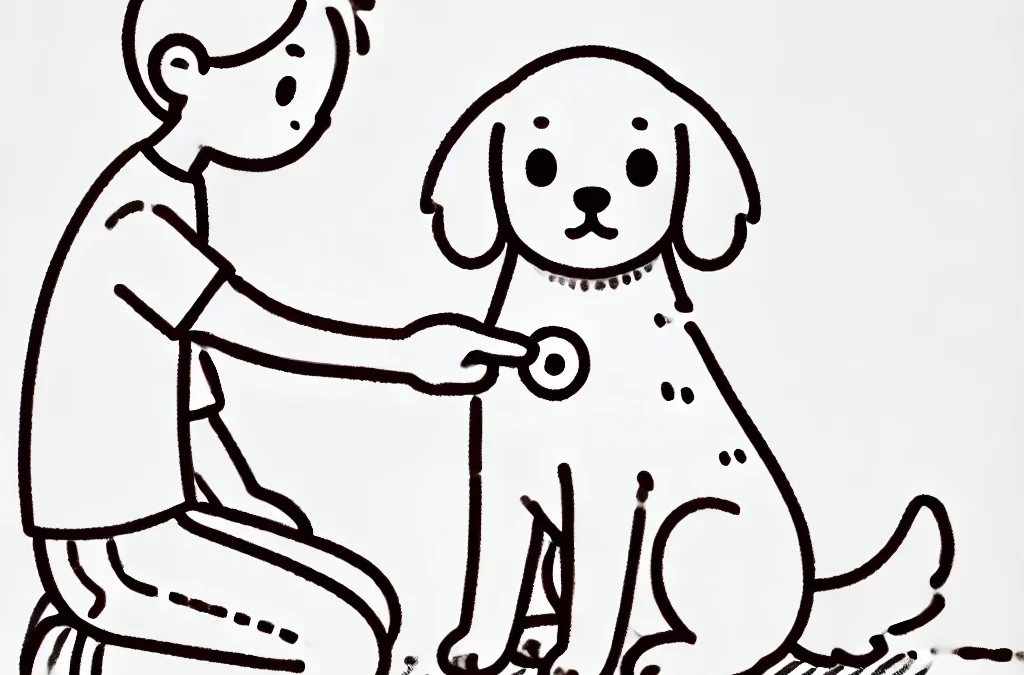
by TCMVET | Feb 10, 2025 | Cat Cancer & Tumors
As pet owners, we often think of our cats as resilient and independent creatures, their health seemingly in their control. However, much like humans, cats are susceptible to a variety of health conditions, including cancer. The question that often arises is: Is my cat predisposed to develop cancer? The answer lies in the often overlooked and complex world of genetics. Understanding the genetic factors behind feline tumors can help you better care for your pet and potentially identify early warning signs.
The Role of Genetics in Feline Cancer
Genetics plays a crucial role in the development of tumors in cats, much like it does in humans. Certain breeds, for instance, are more genetically predisposed to developing specific types of cancer. While cancer is multifactorial—meaning that environmental factors also play a significant role—genetics provides the foundation for understanding the inherited risks.
Breed-Specific Predispositions
Some cat breeds are more prone to certain types of cancer due to genetic factors that have been passed down through generations. For example:
- Siamese Cats: Siamese cats are more prone to developing a variety of cancers, including lymphomas and leukemia. This breed’s genetic makeup may predispose them to certain immune system malfunctions that make them more vulnerable to these cancers.
- Persian Cats: Persian cats are at a higher risk of developing renal cell carcinoma, a cancer that affects the kidneys. The genetic mutations present in this breed affect the kidneys’ ability to function normally, leading to the possibility of tumor formation.
- Maine Coon Cats: Known for their large size and gentle personalities, Maine Coons are also at higher risk for developing heart tumors, such as cardiomyopathy, due to genetic mutations related to their size and structure.
These breed-specific predispositions highlight the importance of genetics in feline cancer. If you own a breed that is known for specific cancer risks, it’s essential to keep an eye out for early signs and maintain regular veterinary check-ups.
Genetic Mutations and Cancer
Beyond breed-specific tendencies, cats can inherit specific genetic mutations that make them more susceptible to cancer. These mutations can affect tumor-suppressing genes, cell growth, and the immune system’s ability to detect and destroy abnormal cells.
A prime example is the mutation of the p53 gene, known as the “guardian of the genome.” This gene is crucial for regulating cell division and repairing damaged DNA. When this gene mutates, it can lead to uncontrolled cell growth, increasing the likelihood of tumors. Cats with defective p53 genes are more likely to develop cancers like lymphoma and soft tissue sarcomas.
Additionally, oncogenes, which promote cell growth, can also play a role in feline cancer. If these genes are overactive due to genetic mutations, they can cause abnormal cell proliferation and contribute to tumor development.
Can Genetics Be Tested in Cats?
In humans, genetic testing has become a standard practice for identifying cancer risk, but what about cats? While genetic testing for feline cancer is still relatively new, it is advancing rapidly. Some veterinary clinics offer genetic testing to identify predispositions to certain cancers. These tests can analyze your cat’s DNA for specific mutations linked to cancer risk.
Genetic tests can provide valuable insight, especially for breeds that are more prone to cancer. For example, if your cat is a Siamese or Persian, a genetic test could help determine whether they have mutations that increase their likelihood of developing cancer.
However, it’s important to remember that even if a genetic test shows that your cat has a predisposition to cancer, it doesn’t guarantee they will develop the disease. Many other factors, including diet, environment, and lifestyle, influence the development of tumors.
Early Detection: The Key to Managing Cancer Risk
While understanding your cat’s genetic predisposition to cancer is important, early detection remains one of the most effective ways to manage the risk of tumors. Regular veterinary check-ups, annual screenings, and being vigilant about any behavioral or physical changes in your cat can help catch tumors in their earliest stages when they are most treatable.
Signs that your cat may have a tumor include:
- Lumps or bumps that don’t go away or change in size.
- Loss of appetite or sudden weight loss.
- Unexplained lethargy or changes in activity levels.
- Difficulty breathing or coughing.
- Changes in coat condition.
If you notice any of these signs, consult your vet immediately for further evaluation and diagnostic testing. Early intervention can dramatically improve your cat’s prognosis.
Can Lifestyle Factors Help?
While genetics can influence a cat’s susceptibility to cancer, lifestyle factors play a significant role in determining whether the disease will develop. Proper nutrition, regular exercise, and stress management can all have a protective effect on your cat’s health. Keeping your cat indoors, for example, can reduce exposure to carcinogens and other environmental risks.
Feeding your cat a well-balanced diet, free from unnecessary chemicals and preservatives, can also help maintain a strong immune system, making it easier for your cat’s body to fight off abnormal cells before they can become cancerous. Supplementing with antioxidants, such as vitamin E and beta-carotene, can further support the immune system.
Conclusion: Genetics is Only Part of the Puzzle
Understanding your cat’s genetic predisposition to cancer is important, but it is not the sole determinant of their health. Regular veterinary visits, early detection, and lifestyle factors all contribute to your cat’s overall well-being. By combining knowledge of genetics with proactive health care, you can better manage the risk of cancer and improve your cat’s quality of life.
Remember, even if your cat is genetically predisposed to cancer, it doesn’t mean they will inevitably develop the disease. With careful monitoring and the right care, many cats with genetic risk factors live long, healthy lives. The key is being informed and taking action early.

by TCMVET | Feb 9, 2025 | Dog Cancer & Tumors
When your cat is diagnosed with a tumor, it can be an overwhelming experience for both you and your feline companion. Traditional treatment options often focus on surgery, chemotherapy, or medication, but there is an emerging approach that focuses on holistic health: moderate exercise. The idea might sound surprising, but research suggests that exercise can be a valuable ally in boosting your cat’s immune system, potentially improving their quality of life and aiding in their recovery. In this article, we’ll explore how moderate exercise can benefit your cat’s immunity and overall health during tumor treatment.
The Link Between Exercise and Immunity: What You Need to Know
Before diving into the details, let’s first understand the science behind exercise and the immune system. For humans and animals alike, regular physical activity has been shown to improve immune function by stimulating the production of white blood cells (which fight infections), enhancing circulation, and promoting the removal of toxins from the body. This means that even during cancer treatment, gentle movement can support your cat’s natural defense mechanisms, making it easier for them to fight off infections and recover from illness.
Why Moderation is Key
Moderate exercise, unlike intense physical activity, is a low-impact approach that focuses on promoting mobility without stressing the body. For a cat with a tumor, overexertion can be detrimental, leading to fatigue or exacerbating their symptoms. Therefore, it’s crucial to strike a balance: the goal is to incorporate activities that are enjoyable and stimulating but don’t strain your cat’s body.
So, how can you ensure that your cat is getting the right amount of exercise?
1. Short Play Sessions: Focus on Mental Engagement
Cats with tumors may not have the same energy levels as they did before their diagnosis, and it’s important not to overwhelm them. Instead of long playtimes, aim for short, frequent play sessions. Ten to fifteen minutes of interactive play with their favorite toys can be enough to stimulate both their body and mind. Whether it’s a feather wand, a laser pointer, or a simple ball, keeping your cat mentally engaged is just as important as physical activity.
These play sessions help maintain muscle tone and flexibility while encouraging circulation, all of which contribute to improved immunity. The key is consistency—try to make these sessions a regular part of your cat’s day, adjusting the length of each based on their comfort level.
2. Encourage Exploration with Safe, Easy Movement
If your cat is used to being active and curious, encourage them to explore low-stress environments within your home. Cats love to wander, and even small, controlled movements can be beneficial. For example, allow them to move between rooms or investigate new areas of the house. Keep their environment safe, free of obstacles that could cause injury, and make sure there are cozy resting spots nearby for when they need breaks.
Providing opportunities for movement throughout the day will help promote lymphatic drainage, which can assist in detoxification. This type of gentle movement can also help maintain muscle mass and joint health, which is essential for overall well-being.
3. Integrating Gentle Walks or Outdoor Time
For cats that enjoy being outdoors (or if you have a safe outdoor enclosure), gentle walks can be a fantastic way to encourage movement. Walking with your cat on a leash (if they’re comfortable with it) allows them to explore and stretch their legs, enhancing circulation and offering a change of scenery.
However, always keep the exercise short and avoid hot or humid weather, as this can place additional stress on your cat’s body. The goal is to make these outdoor sessions enjoyable and stress-free, not strenuous.
4. Massage and Stretching: Indirect Exercise
When your cat has a tumor, they may experience tension or discomfort in specific areas of their body. Gentle massage can be an excellent way to enhance circulation without needing your cat to physically exert themselves. Soft strokes and light stretching can help with blood flow and prevent stiffness.
Some cats also enjoy being gently stretched—particularly the back and legs. These motions can help prevent muscle atrophy and promote relaxation. As always, observe your cat’s reactions; if they seem uncomfortable or resist, back off and try something gentler.
5. Tailor the Approach to Their Needs
Every cat is unique, and their response to exercise will vary depending on the type and stage of the tumor, their age, and overall health. It’s essential to adapt your approach based on your cat’s condition. Some cats may need more rest, while others will thrive with slightly more activity. Communicate with your veterinarian to assess how much exercise is appropriate for your cat’s specific situation.
The right balance of rest and activity can help your cat feel more comfortable, boost their energy levels, and support their immune system during treatment. Always monitor your cat’s energy levels and behavior to make sure they aren’t overexerting themselves.
The Role of Diet and Supplements
While exercise plays a crucial role in boosting immunity, it’s essential to pair it with a proper diet and supplements. Offering your cat high-quality, nutritionally balanced food is essential, especially during cancer treatment. Additionally, consider incorporating immune-boosting supplements like omega-3 fatty acids, antioxidants, and specific herbal remedies to enhance their defense system.
Herbal supplements like Chuanxiong (Szechuan Lovage), Reishi mushrooms, and turmeric can have supportive properties for cancer patients. Always consult with your vet before adding any new supplements to your cat’s routine.
Conclusion: A Gentle Path to Healing
It’s easy to assume that a diagnosis like cancer means that your cat must rest all the time, but the right amount of moderate exercise can play a vital role in maintaining their health and boosting immunity. Through short play sessions, gentle walks, safe exploration, and the occasional massage, you can help your cat stay active in a way that supports their body’s natural healing processes.
Remember, the goal is moderation—exercise should never be forced, but rather, encouraged in a way that suits your cat’s comfort level. Always listen to your cat’s cues and work closely with your veterinarian to ensure your chosen activities are safe and beneficial. With patience, love, and the right amount of gentle movement, you can support your cat through their cancer journey with strength and vitality.

by TCMVET | Feb 9, 2025 | Cat Cancer & Tumors
Cats, like humans, can develop tumors as they age. These growths can be benign or malignant, and as pet owners, we always want to provide our furry friends with the best care. While conventional treatments such as surgery, chemotherapy, and radiation are common, many cat owners are seeking natural alternatives to support their cat’s health and possibly complement traditional treatments. One of the most common and effective options is the use of natural supplements.
In this article, we will discuss the best natural therapies for feline tumors and how you can choose the right supplements to support your cat’s health, including the use of TCMVET Baituxiao, a product designed to help inhibit tumor growth.
Understanding the Role of Natural Supplements in Tumor Treatment
Natural supplements can play a vital role in supporting your cat’s body while it fights cancer. Some supplements focus on boosting the immune system, while others may help manage symptoms or inhibit tumor growth. However, it is essential to remember that supplements should not be used as a replacement for traditional veterinary care, but rather as a complementary therapy.
Key Supplements for Feline Tumors
- Turmeric (Curcumin)
Curcumin, the active ingredient in turmeric, has been studied for its anti-inflammatory and anti-cancer properties. It is known to help prevent the growth of tumors and even slow down the spread of cancer cells. You can find turmeric in supplement form, often combined with black pepper for better absorption.
- CBD Oil
CBD (Cannabidiol) is another natural supplement gaining popularity for its ability to help reduce pain and inflammation in pets with cancer. It may also help with anxiety and stress, which are common in cats with health conditions. CBD oil has been shown to potentially shrink tumors and improve overall quality of life.
- Omega-3 Fatty Acids
Omega-3s, found in fish oils, are well-known for their anti-inflammatory properties and ability to boost the immune system. They can help reduce tumor growth and support a healthy coat, skin, and overall vitality.
- Mushroom Supplements
Medicinal mushrooms such as Reishi, Shiitake, and Maitake have been used in traditional medicine for their immune-boosting and anti-cancer properties. These mushrooms contain beta-glucans, which stimulate the immune system to fight cancer cells.
- TCMVET Baituxiao
TCMVET Baituxiao is a Chinese herbal supplement that has gained recognition for its effectiveness in helping to reduce and inhibit tumor growth. Specifically formulated to support pets with cancer, this supplement works by promoting blood circulation and reducing the stagnation that can contribute to tumor growth. It is an excellent option for cats with tumors, particularly when used as a complementary treatment alongside veterinary care.
How to Choose the Right Supplement for Your Cat
When selecting a supplement for your cat, there are several factors to consider:
- Consult with Your Veterinarian: Always consult with your vet before introducing any new supplement to your cat’s regimen. Some supplements may interact with medications or other treatments, so it’s essential to ensure compatibility.
- Quality and Sourcing: Ensure that any supplement you choose is from a reputable source. Quality matters, especially when it comes to supplements that are meant to address health concerns. Opt for products that are specifically designed for pets and come from companies with a track record of quality and safety.
- Formulation for Cats: Cats have different nutritional needs than humans, so ensure that any supplement is formulated for cats. Some supplements are designed specifically to be cat-friendly and are easier for them to consume, whether in capsule, powder, or liquid form.
- Specific Tumor Type: Different types of tumors may require different forms of support. For instance, certain supplements may be more effective for managing solid tumors, while others might be better suited for internal or hematologic cancers. Make sure to choose a supplement that fits your cat’s specific condition.
Conclusion
Natural therapies can be a valuable part of your cat’s cancer care plan. Supplements such as turmeric, CBD oil, omega-3 fatty acids, and medicinal mushrooms can help support your cat’s immune system, reduce inflammation, and potentially inhibit tumor growth. In particular, TCMVET Baituxiao offers a unique blend of Chinese herbal ingredients designed to promote overall health and reduce tumor progression.
Always consult your veterinarian before adding any new supplement to your cat’s regimen to ensure the best possible outcomes for your pet’s health. Together, with a holistic approach to care, you can give your feline companion the best chance at a long, healthy life.

by TCMVET | Feb 7, 2025 | Dog Cancer & Tumors
Chemotherapy can be a lifesaving treatment for dogs with cancer, but it often comes with side effects that impact their quality of life. While chemotherapy for dogs is generally less aggressive than in humans, many dogs still experience digestive issues, fatigue, appetite loss, and weakened immunity. Understanding how to minimize discomfort and provide proper nutritional and supportive care can make a significant difference in your dog’s well-being during treatment.
Common Side Effects of Chemotherapy in Dogs
🐶 Gastrointestinal Issues – Vomiting, diarrhea, nausea, and loss of appetite are common due to chemotherapy’s impact on fast-dividing stomach lining cells.
🐶 Fatigue & Weakness – Your dog may be more tired than usual and prefer longer rest periods.
🐶 Lowered Immunity – Chemotherapy can reduce white blood cell counts, making your dog more prone to infections.
🐶 Hair Loss (in Certain Breeds) – While most dogs don’t lose much hair, breeds with continuously growing coats (e.g., Poodles) may experience noticeable thinning.
🐶 Mouth Ulcers & Drooling – Some dogs develop mouth sores, leading to discomfort while eating.
How to Alleviate Chemotherapy Side Effects?
1. Managing Nausea & Vomiting
- Feed small, frequent meals instead of large portions.
- Offer bland, easily digestible foods like boiled chicken, white rice, and pumpkin.
- Ginger (fresh or in supplement form) can help reduce nausea.
- If vomiting persists, ask your vet about anti-nausea medications like Cerenia (maropitant).
2. Supporting Appetite & Preventing Weight Loss
- Warm up your dog’s food slightly to enhance aroma and encourage eating.
- Try high-calorie, nutrient-dense foods such as cooked eggs, lean meats, and cottage cheese.
- Consider adding bone broth or goat milk to meals for extra hydration and nourishment.
- If your dog refuses food, appetite stimulants like Mirtazapine may help.
3. Preventing Diarrhea & Dehydration
- Use probiotics (e.g., FortiFlora) to support gut health.
- Feed foods rich in soluble fiber like canned pumpkin or steamed sweet potatoes.
- Ensure constant access to fresh water and offer electrolyte solutions if diarrhea persists.
- Consult your vet if diarrhea lasts more than 24 hours or includes blood.
4. Boosting the Immune System
- Include antioxidant-rich foods like blueberries, turmeric, and omega-3 fatty acids.
- Medicinal mushrooms (e.g., Turkey Tail, Reishi) may help modulate immune function.
- Avoid raw diets during chemotherapy, as weakened immunity increases infection risks.
5. Managing Fatigue & Weakness
- Allow your dog extra rest but encourage light activities like short walks for circulation.
- Provide a comfortable, warm resting space with soft bedding.
- Consider gentle massage therapy or acupressure to ease tension and improve relaxation.
6. Caring for Mouth Sores & Drooling
- Offer soft or moistened food to reduce irritation.
- Use pet-safe oral rinses (e.g., chlorhexidine solution) to prevent infections.
- Coconut oil can be applied to gums for its soothing and antibacterial properties.
Supplements That May Help
🌿 Milk Thistle – Supports liver detoxification from chemotherapy drugs.
🌿 CBD Oil – May help with pain relief, nausea, and inflammation.
🌿 L-Glutamine – Supports gut lining health and reduces diarrhea risk.
🌿 Omega-3 Fatty Acids (Fish Oil) – Provides anti-inflammatory benefits and supports immune health.
When to Contact Your Vet?
🚨 Persistent vomiting or diarrhea lasting over 24 hours
🚨 Severe lethargy or collapse
🚨 Signs of infection (fever, swollen lymph nodes, excessive panting)
🚨 Loss of appetite for more than two days
🚨 Uncontrolled bleeding or bruising
Final Thoughts
Managing chemotherapy side effects in dogs requires a balanced approach combining nutritional support, home care, and veterinary guidance. By closely monitoring your dog’s response and making necessary adjustments, you can help them navigate treatment with greater comfort and resilience.

by TCMVET | Feb 7, 2025 | Dog Cancer & Tumors
Discovering a lump on your dog’s body can be alarming. Is it just a harmless fatty tumor, or could it be something more serious? Many pet owners hesitate between monitoring the lump at home and rushing to the vet. The key is knowing how to assess the lump properly and recognizing the warning signs that require medical attention.
This article introduces a practical, hands-on guide for pet owners to evaluate their dog’s lumps and bumps, helping you make informed decisions about when to seek veterinary care.
Step-by-Step Guide to Checking Your Dog’s Lump
🖐 1. Use the “Rule of Five” Approach
When examining a lump on your dog, assess these five factors:
1️⃣ Size – Is the lump smaller than a pea, or is it growing over time?
2️⃣ Shape – Is it round and smooth, or irregular and bumpy?
3️⃣ Texture – Is it soft and movable, or firm and attached to underlying tissue?
4️⃣ Color & Surface – Is the skin over the lump normal, reddened, or ulcerated?
5️⃣ Growth Rate – Has it changed in size within weeks or months?
🐾 2. The “Two-Finger Test”
Gently move the lump between your fingers. If it feels freely movable under the skin, it’s more likely to be benign (such as a lipoma). If it’s firmly attached to deeper tissues, it could be more concerning.
🔍 3. Observe Any Additional Symptoms
Check for changes in your dog’s behavior and overall health. Are they eating well? Losing weight? Scratching or licking the lump excessively? These clues can help determine if the lump is causing discomfort or systemic effects.
Common Types of Lumps and When to Worry
🔹 Lipomas (Fatty Tumors)
✅ Soft, round, and movable
✅ Common in older or overweight dogs
✅ Usually harmless, but should be monitored for sudden growth
🔹 Sebaceous Cysts
✅ Filled with a thick, white, or yellowish substance
✅ Can rupture or become infected
✅ Often not serious but may need draining or removal if problematic
🔹 Mast Cell Tumors (MCTs)
🚨 Often appear red, swollen, or ulcerated
🚨 Can change size rapidly due to histamine release
🚨 Require immediate veterinary evaluation, as they can be aggressive
🔹 Histiocytomas
✅ Common in young dogs, usually on the head or legs
✅ Appear as red, raised, button-like lumps
✅ Often disappear on their own, but should still be checked
🔹 Soft Tissue Sarcomas
🚨 Firm, deep-seated, and slow-growing
🚨 Often do not feel well-defined
🚨 Can be invasive and may require surgical removal
When Should You See a Vet?
📌 Immediate Veterinary Visit Required If:
- The lump grows rapidly or changes shape
- It is firmly attached to underlying structures
- There is bleeding, ulceration, or infection
- The lump causes pain or discomfort
- Your dog shows other symptoms like weight loss, lethargy, or appetite changes
📌 Monitor at Home If:
- The lump is small, soft, and slow-growing
- Your dog is acting normal with no discomfort
- No rapid changes in size, texture, or color are observed
How Vets Diagnose Lumps
If a vet visit is necessary, they may use:
🩸 Fine Needle Aspiration (FNA) – Extracting cells for microscopic examination
🔬 Biopsy – Taking a tissue sample for more detailed analysis
🖥 Ultrasound or X-rays – To check for internal masses or metastasis
Final Thoughts
Not all lumps are cause for panic, but early detection is crucial. The best approach is to regularly check your dog’s body, stay alert for changes, and consult your vet when in doubt. Being proactive can make a huge difference in ensuring your dog’s long-term health.





